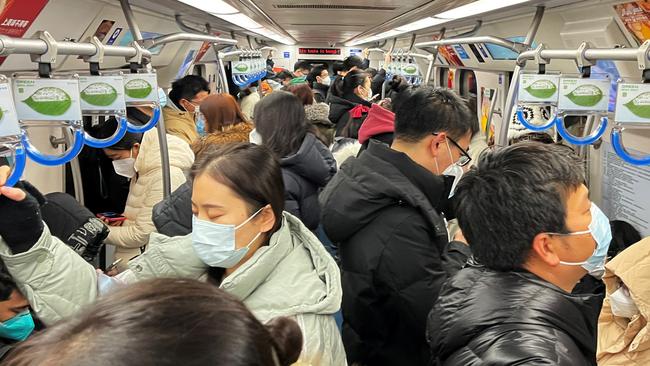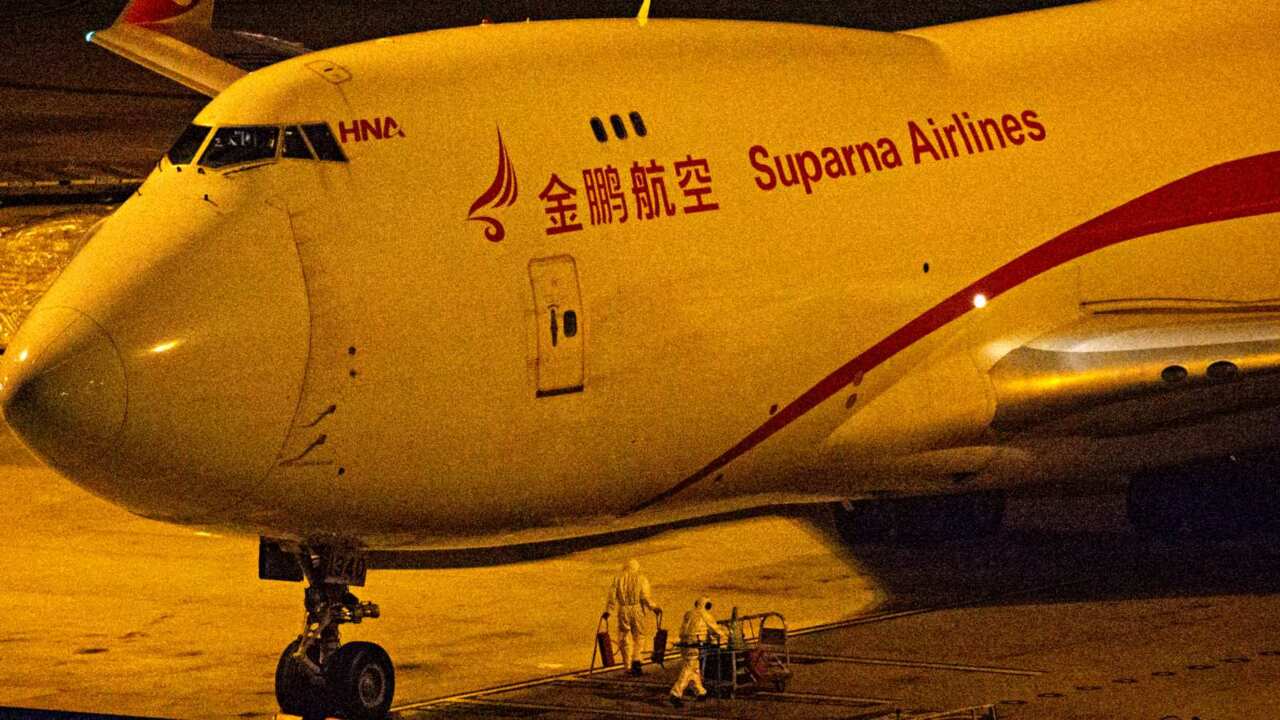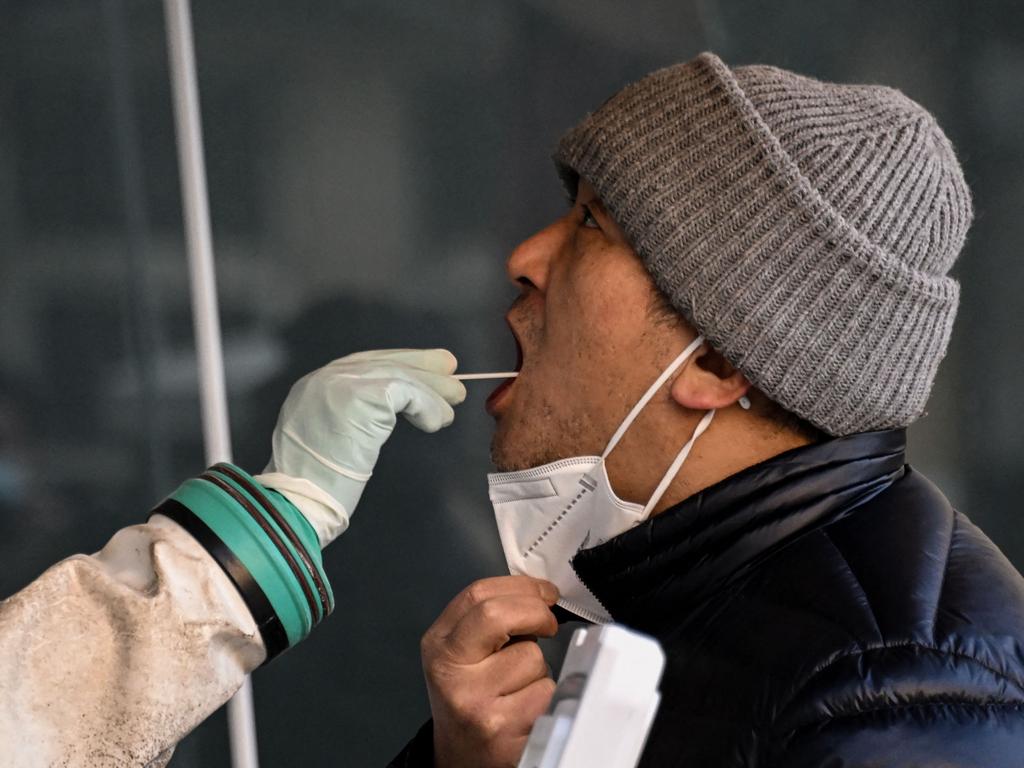Chinese travellers face new Covid restrictions
Australia has left open the prospect amid concerns deadly new variants could emerge from the nation of 1.4 billion people.

Australia has left open the prospect of slapping new restrictions on Chinese travellers amid concerns deadly new Covid-19 variants could be released from the country following an explosion in cases of the virus in the nation of 1.4 billion people.
The US confirmed on Wednesday it was considering putting Covid restrictions back in place for people arriving from China, raising alarm over the lack of “transparent data” from Beijing on the number of cases.
“There are mounting concerns in the international community on the ongoing Covid-19 surges in China and the lack of transparent data, including viral genomic sequence data, being reported from the People’s Republic of China,” US officials said.
“Without this data, it is becoming increasingly difficult for public health officials to ensure that they will be able to identify any potential new variants and take prompt measures to reduce the spread.” The officials said the US was consulting with partners that had already put restrictions on Chinese travellers in place, such as Japan and India, and was “considering taking similar steps to protect the American people”.
A spokesman for Health Minister Mark Butler said Australia was also closely watching the situation.
“The Australian government continues to monitor the global situation,” he said, while noting travel arrangements for Australians and international visitors remained unchanged.
Australia opened its borders to vaccinated travellers from overseas in February and in July ditched the need for travellers to complete digital passenger declarations upon entering.
Anthony Albanese signalled this month Australia was moving to treat Covid “like other respiratory diseases”, following the release of the government’s health management plan for 2023 that included the scaling back of some measures such as free PCR tests outside state-run testing clinics.
Japan this week announced it would put Covid restrictions back in place for those entering from mainland China from December 30 onwards. It requires a negative Covid test, or seven days of isolation for those who returned a positive result.
“The new measures will apply to all those who have stayed in China, excluding Hong Kong and Macau, within seven days of the arrival date,” the Japanese government said.
India also has mandatory testing in place for travellers from five countries, including Japan and China, while Malaysia announced it would beef-up its Covid surveillance following Beijing’s easing of restrictions.
Overnight (AEDT), Italy imposed mandatory Covid-19 tests on Chinese travellers after nearly half of all arrivals from China entering through Milan’s Malpensa airport tested positive to the virus.
On Christmas Eve, a planeload from Beijing, comprising 120 passengers, returned 62 positive cases.
Italy’s Spallanzani Institute, which deals with infectious diseases, called for a boosting of testing of Chinese arrivals across all of Europe.
“It would be better if the co-ordination of surveillance took place at European level,” the institute said in a statement.
Beijing this month announced it would effectively abandon its zero-Covid policy from early next year, and abolish quarantine requirements for incoming travellers from January 8.
Monash University infectious disease expert Michael Lydeamore told The Australian new variants being imported from countries like China was a concern because they are often not picked up until they have already spread into the community.
“We pick up these new things that emerge very late and that does start to raise the question of border measures,” he said. “They obviously come at huge cost – financial cost and personal cost.”
Dr Lydeamore said if a variant was much more infectious, but equally as severe as what was already in the community, border measures may not be needed.
“But if a variant emerges that’s 50 per cent more lethal, then obviously you don’t want that variant circulating,” he said.
“The real difficulty is we won’t know that information until quite late in the piece.”
Dr Lydeamore said all new variants, including Omicron, had entered Australia from overseas.
“Anywhere where there’s a lot of infections going on is the place where new variants are most likely to emerge,” he said.
“Border surveillance is effective if people are somehow restricted from transmitting until their test is done, and we’re not talking RAT tests … these things have to be sent off to a lab and processed by specialised staff and that would start to bring back the quarantine argument.”

Infectious diseases physician Paul Griffin, who is director at Mater Health in Brisbane, said the influx of more Covid cases was a worry, but that there were limits to what he believed border measures could do.
“I certainly do have concerns. The situation (in China) is escalating very quickly. But we’ve passed the capability to contain that,” he said. “I’d just like to see better testing across the board to find cases within our country, as well as those being imported from travellers from all over the world.”
Currently, Covid testing requirements are enforced only in high-risk settings such as hospitals and aged-care homes.








To join the conversation, please log in. Don't have an account? Register
Join the conversation, you are commenting as Logout